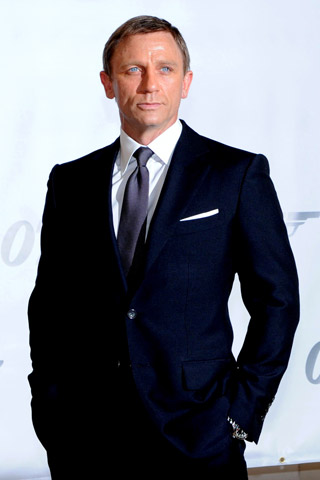Sharp Dressed Man: The Basics of a Man's Suit Ensemble

- Style incarnate
The truth is that I’ve been promising/threatening to write this blog for a while but I’ve procrastinated. There is so much I want to say but couldn’t figure out how to focus my thoughts. However after recently suit shopping with a friend I decided to stick to the ins-and-outs of a proper suit. “What’s the big deal”, you say? “Men’s business attire is pretty straight forward”, you say? Well, did you ever see a grown man wearing a suit so big that you wonder if he shrank? Or a tie so short you wonder if he’s channeling Jackie Gleason or Bozo the Clown? The dos and don’ts of men’s business attire have been established over centuries and, while subject somewhat to trend, most of the rules are pretty clear-cut. I will do my best to give you the "Cliff Notes" version of those rules and to keep it short and to the point (well, to the point anyway), I’ll stick to bullet points.
- Your belt and shoes should be the same color
- Your socks should be the same color as your pants
- Your tie, when tied, should end at the middle of your belt buckle
- When wearing your jacket, button as follows:
- 3 button suit: top button = sometimes, middle button = always, bottom button = never
- 2 button suit: top button = always, bottom button = never
- 1 button suit: button = always
- Your shirt sleeve cuff to extend ½” past your jacket sleeve
- Undershirt is a must
- Shirt should be ironed and shoes should be polished
- To freshen up your suit hang it in the bathroom while you shower and the steam should loosen any wrinkles
Second… fit
Suit jacket – there are so many things that go into a properly fit suit jacket. This is just a sampling of some of the key points to look for.
- creases running horizontally between the shoulders when you’re standing still mean the jacket is too tight
- vertical creases running down the center of the back when standing still indicate that the jacket is too big
- if the back neck of the suit is buckling away from the body then it’s too big and should be altered
- the jacket should be long enough to cover the seat of your pants (on this point there is much discussion and most people will tell you that the length of the jacket is in relation to your arms. I disagree with this method since not everyone’s arms are proportional to their body and can end up making the suit seem poorly balanced.)
- the sleeves should be ½” past your wrist bone, or ½” shorter than the length of your shirt sleeves, which leads me to…
Dress shirt – in my humble opinion the #1 biggest mistake made by American men. Why is it necessary to be swimming in a shirt? Why? But I digress…
Shirts are measured by neck width and sleeve length. Here’s how you to determine your size, you’ll need a tape measure. Don’t have one? Here is a printable one from eBay: http://pages.ebay.com/sizing/tapeMeasure.pdf?ssPageName=csameasuring
- Neck width – measure around the neck just beneath the Adam’s apple, add ½” and there ya go.
- Sleeve length – with arms comfortably at sides, measure from the center of your spine where it meets your neck, along the shoulder and down the arm to your wrist bone and add 1”. That’s your sleeve length. If it comes out in between sizes then round up.
- The shoulder seam of the shirt should align with your actual shoulder, not past it.
- For the body of the shirt your “off the rack” choices are limited unfortunately, but generally if you are a thin guy or have an athletic build then look for shirts that say “fitted” or “tailored”.
- A barrel cuff is the regular button cuff and the French cuff requires a cuff link. This is purely a matter of personal taste.
I think that’s enough for now. In the next entry I’ll cover pants, shoes, accessories etc. Here’s a hint of things to come… yes, the pants should be flat front!
Is this too much information? Not enough information? Click “Leave a comment” and let me know before the next installment. Thanks!!
